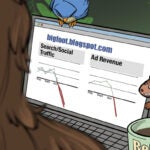 Founded six years ago by three former Yahoo engineers, social commerce community portal Polyvore has amassed 80 million product boards or “sets” since inception. To date, the company has raised more than $22 million in funding from Benchmark Capital and others, and now feeds 7.5 billion product impressions per month to brand and retail clients that have ranged from Bergdorf Goodman to Nordstrom.
Founded six years ago by three former Yahoo engineers, social commerce community portal Polyvore has amassed 80 million product boards or “sets” since inception. To date, the company has raised more than $22 million in funding from Benchmark Capital and others, and now feeds 7.5 billion product impressions per month to brand and retail clients that have ranged from Bergdorf Goodman to Nordstrom.
What do they get from the site’s foot traffic? Front-row access to which products are resonating in real time through promoted collections, brand contests and content audits and keyword analysis courtesy of Polyvore.
Polyvore’s most direct competitor is probably Pinterest, but going forward it will also compete with heavyweights like Amazon, which has just begun to introduce crowd-curated “collections” that could turn user-generated data into revenue opportunities.
Arnie Gullov-Singh, former CEO of Ad.ly and EVP of product, technology and operations for Fox Interactive Media, joined as chief revenue officer in January. He spoke with AdExchanger.
AdExchanger: In short, what is Polyvore?
ARNIE GULLOV-SINGH: Polyvore is the new way to discover and shop for the things you love. We have about 20 million people who come to Polyvore a month and they mix and match products they’ve clicked from around the web into “sets” to express the latest trend they see happening. Then they share these sets on Polyvore with their friends and beyond Polyvore in places like Pinterest, Tumblr, Facebook and Twitter.
What that does is bring in an audience of shoppers who are looking to discover the latest trends. Polyvore is designed to take those consumers through the funnel and all the way to purchase. It turns in to a series of feedback loops, where people create something and get public feedback that they have great taste and so they create more content. Shoppers end up discovering products they wouldn’t have elsewhere.
How do you make money? There is probably a ton of data coming out of all that user-generated content.
Our customers are brands and retailers in the fashion space. We connect them with influential customers and drive them sales. To accomplish those objectives, we have a set of native ad products that happens to be the content being created on the site. We let marketers influence what content’s being created and let them tell a brand story and that lets them connect with a bunch of customers. We drive more sales through our shopping program, and we just rolled out a new CPC option which lets brands and retailers drive more targeted traffic to their product pages.
Pinterest is flirting with a business model for brands and Amazon’s put out a Collections product that visualizes products, much like Pinterest. How would you say you’re different? Do you facilitate purchases on Polyvore or do you redirect?
We drive targeted traffic to retailers and brands. The checkout happens on the retailer or brand’s ecommerce site… I think, at its core, fashion is an impulse purchase category and impulse purchases are a very visual experience – be it online or offline. You might walk past a store on the High Street and see a handbag that you really like. You might open Google and search for the handbag if you didn’t know about it. The same thing happens online and people come to Polyvore because their intent is to discover what’s new and because we provide the tools to do it, we’re able to not only help them discover what’s new, but show them where they can buy it and take them to the point where they can buy it.
You mentioned native ads before. Do you build yourself or get help with that?
Our native ads are all homegrown systems. Our company consists of 72 people and half of the company is in product engineering. The sales organization is fairly small because we try to develop products that are repeatable and that people want to buy every month because it drives them results. When it comes to our native products, it’s really about tapping in to what’s already happening on the site and then using paid promotion to change that or amplify it.
For example, if you’re a luxury brand and we show you data that says that the most popular products for your brand on Polyvore are products about three months old, you’ll want to change [your strategy]… to [drive users to] engage with your latest products. And so we provide paid programs to meet that need. We also provide paid programs to brands to tell a story, so similar to how somebody tells a story on a news site through a piece of editorial, we allow them to build a collage of their products styled in a way that they think is reflective of their brand, and then pay to promote that to our community.
When we think about native advertising, we think about being tightly integrated into the consumer experience. And I think we’re lucky at Polyvore, because our content is all commercial. To have native advertising in that content makes sense.
How many retail partners do you have and do you foresee expanding category content?
Off the top of my head, I think we have about 600 retail partners. The number is changing all the time, but it’s around 600. They’re all in fashion and we’ve seen a lot of growth in fashion with the lower-priced trendy brands, which is the same sort of thing you’ll see in offline. We’ve also seen a lot of growth on the high-end from overseas users from places like Hong Kong, China, Russia and the UK, Canada and Australia . We find that very much mirrors what’s going on in the luxury space overall. When we talk to our retail partners, they see similar trends and it’s why so many luxury companies are expanding to Asia.
How about mobile?
We’re just scratching the surface of how we drive sales and connect to influential consumers. We launched our iOS app at the beginning of this year and it’s done very well. Now, it’s time to think about how to tap into that more to drive sales. Our clients have seen an uptick in mobile purchasing through their own apps and sites, so they’re hungry for partners that can help accelerate that.
Twitter hired a head of commerce to further monetize the platform. Will consumers keep “tuning in” as platforms become more monetized?
We’re seeing a lot of growth in the traffic that we’re sending to retailers and brands. It’s up 18% just in the last quarter and that’s the metric we care about more than anything else. Bringing together content, commerce and community, I think, is what makes Polyvore special.
What’s on your roadmap?
All of our goals align with making the experience more shoppable. We know that will lead to consumers being happier and our retailers and partners being more successful. Along the axis of shoppability, there are three components there. One is expanding the number of platforms we’re on. We’re already on desktop and iOS today, but there are many other platforms out there we should be on.
The second one is expanding verticals. I think fashion is a great place to start and it’s an evergreen, impulse-shopping category. But there are other categories out there like home interiors, weddings, celebrations and probably others we haven’t thought of yet.
And then, lastly, expanding internationally. We have a strong international footprint today in terms of traffic, but there’s a lot we can do to provide a better experience for shoppers and retailers that shift to those markets. The interesting thing about fashion is you have brands that may have a limited physical, real-world footprint but they ship to hundreds of countries. Upscale and trending fashion – there is a lot of opportunity here.












